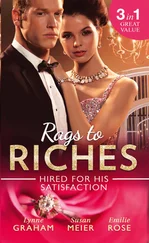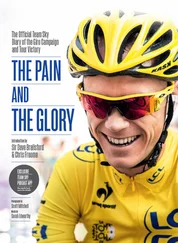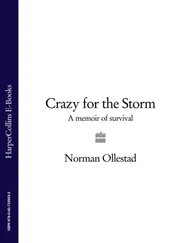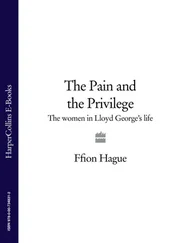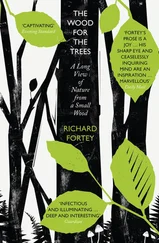I recall still, nearly seventy years later, some of the first racehorse names that I read in the Sporting Globe . More than that, I recall the effect on me of my reciting those names in the way that the racing commentators recited them. So strongly do I recall the effects of some names that I am able nowadays to put out of my mind the dictionary meanings of those names and to see the clusters of images that they promoted long ago and to feel the moods connected with the images. I did not know, for example, the dictionary meaning of the word HIATUS or even whether the word was to be found in any dictionary. Whenever I saw the word above the blurred image of a racehorse in the Globe , I saw at once an image of a bird in flight above a deserted seashore or estuary. Not until many years later did I learn who were the ICENE or who was TAMERLANE. The word ICENE above the blurred image of a racehorse brought to mind a long silver-white robe worn by some notable female personage and the pleasant sound of the train of the robe as it swept across a floor of cream-coloured marble. TAMERLANE denoted for me a grassy pathway overhung by rows of tamarisk trees. Many names, however, failed to impress me or even repelled me. (It seemed to me then, and it seems still, that most racehorses are poorly named.) I can recall from the 1940s such drab names as LORD BADEN, CHEERY BOY, and ZEZETTE. The bearers of such names fared badly in my early imaginary races, which were invariably won by horses with appealing names.
I have hardly begun to describe the complexity of what I saw and felt during those imaginary races. Vague shapes of horses were in the background, but the foreground included more than names in uppercase letters and the imagery arising from those names. Hovering nearby were shadowy images of persons, most of them men in suits and ties and with grey felt hats low on their brows.
In the 1940s, and for several decades afterwards, racehorses in Australia were owned usually by one man alone, and all trainers and jockeys were men. Nowadays, syndicates predominate, many with ten or more members, but I grew up believing that the typical owner of a horse racing in Melbourne was a wealthy businessman or grazier, or a medical or legal practitioner. The typical trainer may have lacked the social standing of the owners, his clients, but he looked hardly different, and if he was one of those described by racing journalists as shrewd or astute he might have been even wealthier than they. Since no well-dressed or wealthy men were to be seen in the back streets of Bendigo, the image-men in my mind must have been derived from illustrations in newspapers. As for the men’s histories or personalities, I seemed to have understood already that these were of little account on a racecourse; an owner or a trainer was defined by the performance of his horses.
My image-horses had image-jockeys, but these were mostly inscrutable. The nearest I had come to seeing an actual jockey was my standing beside my father at the Bendigo Showgrounds on a cold evening during the Easter Fair while a few harness horses paraded before the race that was run as part of a program of foot races and cycling races and axemen’s contests. My father called out to a driver that he knew, and the man walked his horse to the outside fence, leaned back in his sulky, and exchanged a few words. While horse and driver were approaching us, my father had told me that the driver was Clarry Long and the horse Great Dalla. Clarry, like many Bendigonians, was of Chinese descent and his mostly expressionless demeanour made him seem to me more self-assured than myself or my father. Clarry was wearing the first set of racing colours that I had seen, and the same weak light from atop the nearby stanchion that made his face seem waxen worked also on the satin of his jacket. I have for long surmised that Great Dalla’s colours were Brown, pale-blue stars and cap, but such was the play of light on the star shapes, on that long-ago evening in faraway Bendigo, that I sometimes decide that the stars on the brown background were not pale blue but silver or even mauve or lilac.
The meagre details reported in the previous half-dozen paragraphs all went into the making of the complex imagery that appeared to me whenever I heard from the backyard the sounds of a race broadcast. At different times while the chanted sounds reached me, I was aware of images of greyish-pink horse shapes, of horse names in uppercase letters, of spectators looking out anxiously from under hat brims, of jockeys with mask-like faces and vague-coloured jackets. I was aware, too, that much was at stake while these images jostled and vied.
The human voice is a marvellous instrument, and the ear that interprets it is hardly less so. I seem to have learned during my first days as a listener to race broadcasts that a caller is sometimes able to signal to his listeners, even when the field is a hundred metres or more from the winning post, that one or another horse will almost certainly win. In some such races the likely winner may have broken clear from the rest; in many a race it may be some distance behind the leaders but gaining noticeably. Whatever the situation, the caller is able to utter the relevant name with such emphasis that his listeners are spared any further suspense. In the dusty backyard, I was often unable to make out a single name but still able to detect the emphatic utterance that signalled in advance the result of a race and to hope that the name thus emphasised was one that I would have deemed worthy.
Driving alone nowadays and hearing reports of the progress of horses unknown to me, I often choose from a number of names the one that most appeals to me. I then suppose myself to be one of the owners of the horse so named or to have backed it to win a large sum. Then I listen intently, hoping to hear my chosen name uttered with the certain emphasis that I learned, nearly seventy years ago, to recognise. On one such occasion recently, the invisible horse that I aligned myself with had a name that appealed to me greatly but the horse itself was always toiling at the rear, to use one of the many stock expressions of race callers and racing journalists.
Even as a dreaming child, I had no wish to be a caller of races. I must have understood that I could never be cool enough or impartial enough during the running of a race to be able to report its developments accurately. And yet, I’ve been for most of my life moved often to hear in mind or to whisper under my breath or even, sometimes when alone, to deliver aloud a few phrases or a single word from a broadcast of some or another race never yet run on Earth. I was thus moved on the occasion mentioned above, after the horse with the appealing name had finished among the tailenders. I was driving at the time on a back road with bitumen wide enough for only one vehicle. I would have felt at liberty to express myself not just once but several times, except that I saw from the rear-vision mirror that a huge truck was close behind me. Apparently I had slowed down while I was preoccupied with racing matters, and the driver of the truck was now anxious for me to get back to the speed limit or to pull over into the gravel and let him pass.
I saw just then a signpost ahead on the left and I flicked on my left-side blinker. The road that I turned into was of gravel and overhung with trees. I guessed that it led towards the Little Desert but the paddocks on either side were well grassed and dotted with sheep. I found a place wide enough for a safe U-turn and stopped. I wound down the driver’s-side window. I listened at first to the profound silence. Then I drew a deep breath and cried out once only what I had been urged for some time past to cry out. Then I watched perhaps a dozen sheep on the far side of the fence lift their heads and stare in my direction. I waited until every sheep had resumed its grazing and then I cried out again — not to the sheep but to the ideal listeners in the ideal world that I first postulated nearly seventy years ago when I first heard a disembodied voice cry out with significant emphasis some such name as Something for the Pain .
Читать дальше



